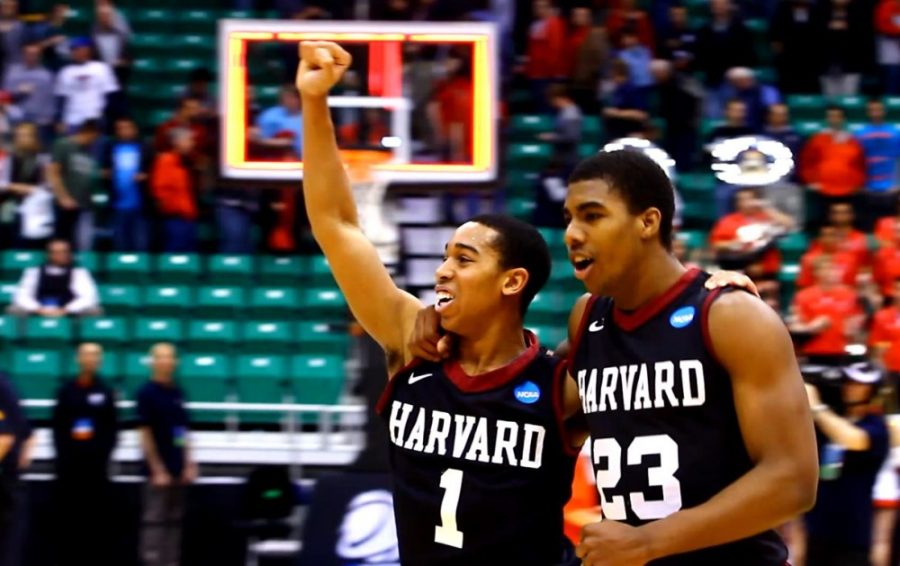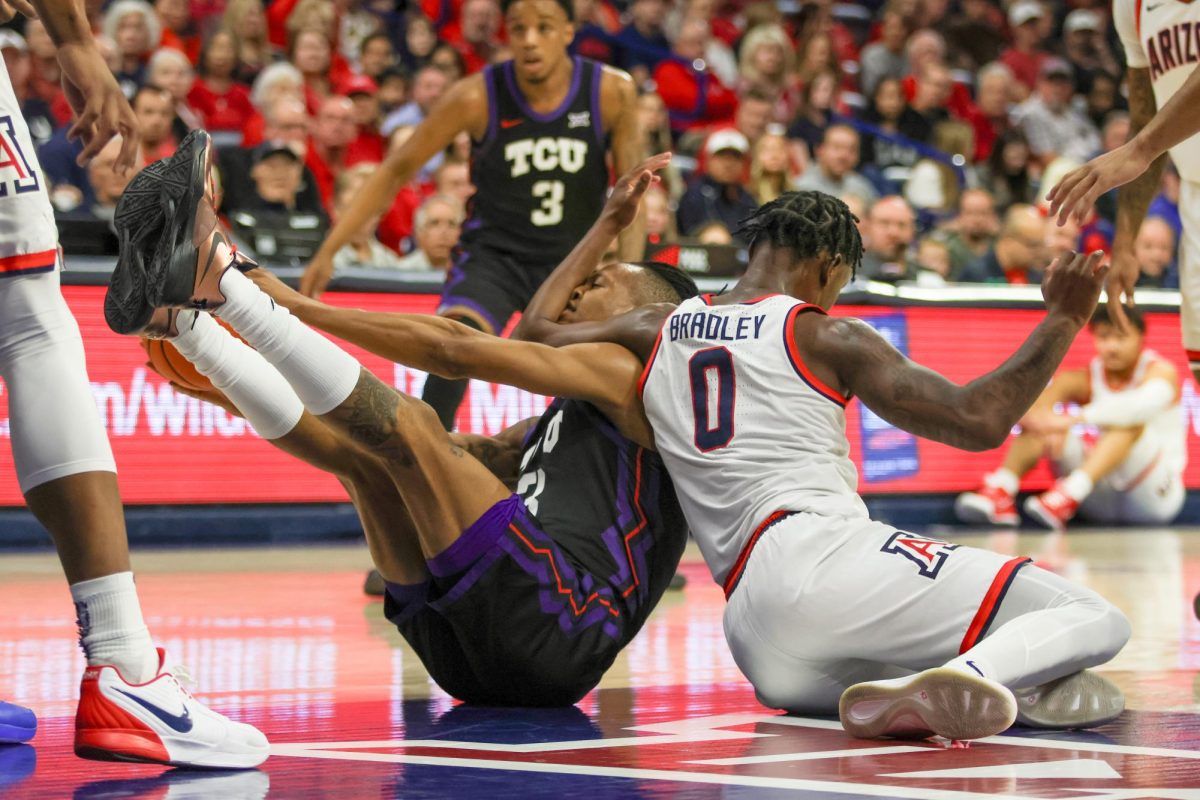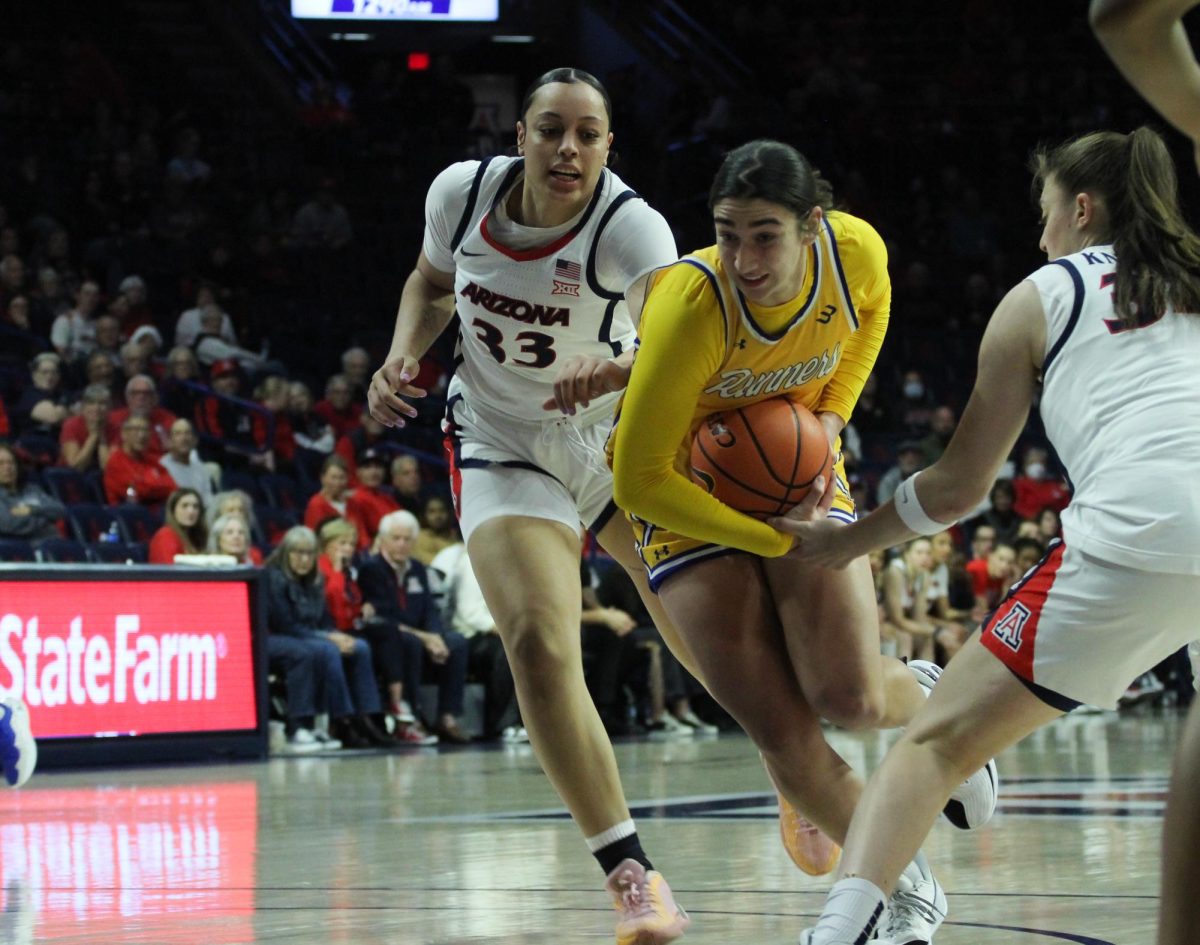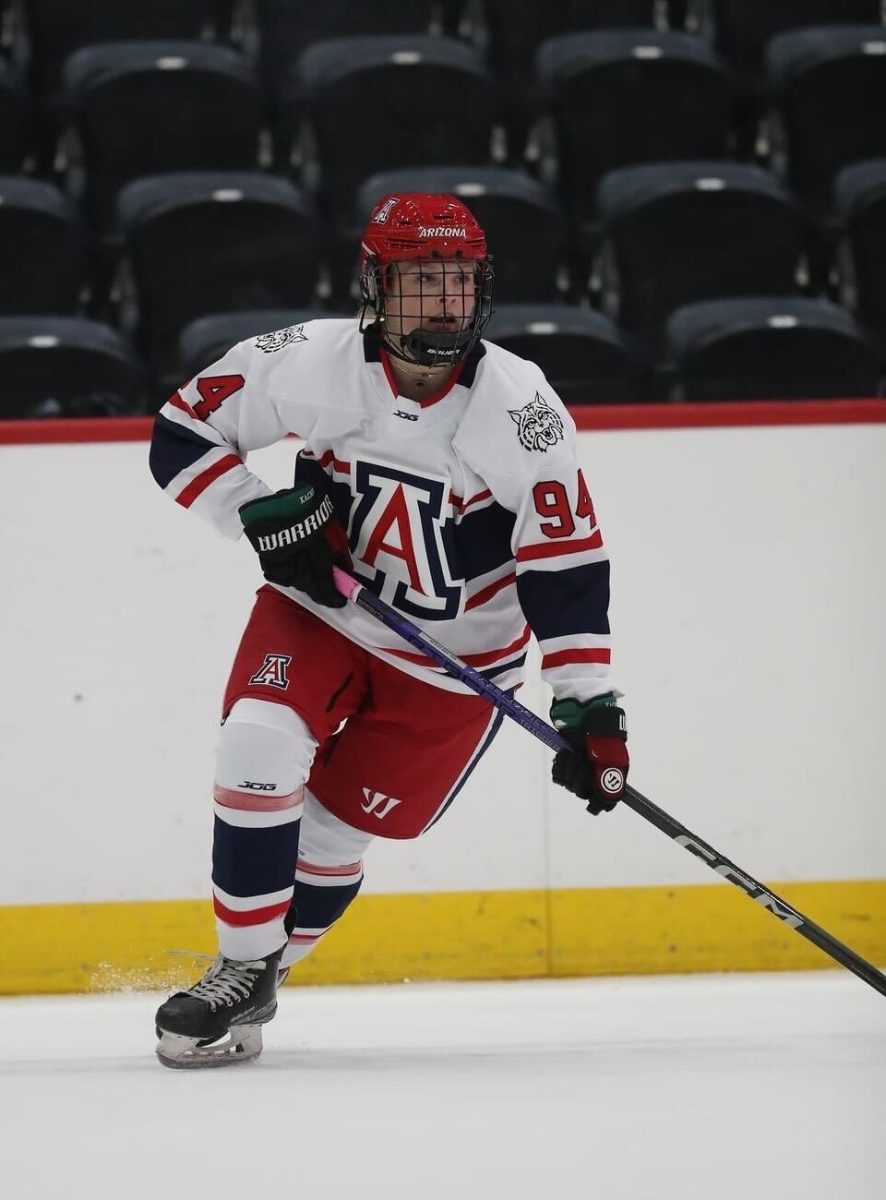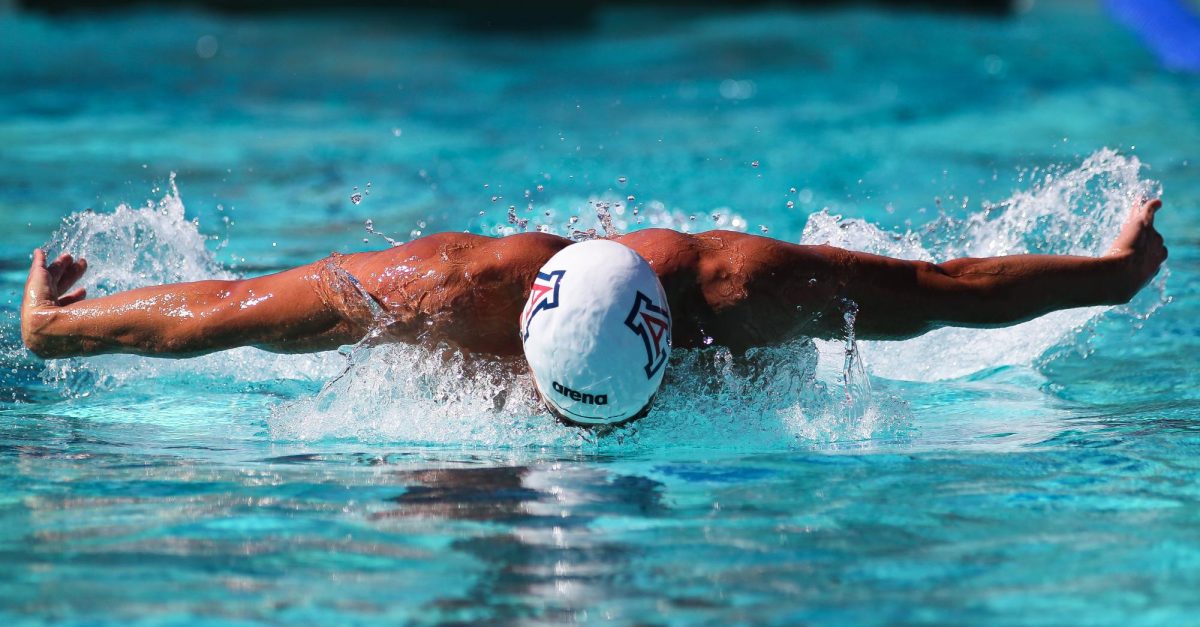SALT LAKE CITY — Harvard doesn’t have much of a basketball legacy.
Jeremy Lin played for the Crimson a few years ago, but before him Harvard only ever had two NBA players — Saul Mariaschin in 1948 and Ed Smith in 1954.
As an institution, though, Harvard’s reputation precedes it.
“I mean, it’s obvious,” said Arizona forward Kevin Parrom, “If you go to Harvard, you’re set for life. That’s what I think of, I think you can have a great job after college, and you’re set for life if you go to Harvard.”
Its basketball program? Not so much. Its “arena” in Cambridge, Mass., has a capacity of 2,195 people, and its team has been to three NCAA tournaments in its history — in 1946, 2012 and now.
“I didn’t think we were gonna play Harvard to be honest,” Parrom said. “I thought we’d be talking about New Mexico today, but we’re talking about Harvard.”
On Thursday, 14th-seed Harvard staked its claim as this NCAA tournament’s “Cinderella” with a 68-62 win against third-seed New Mexico — its first ever NCAA tournament win. The Crimson have been through a lot this year, so it didn’t come easy.
Harvard lost two of their best players before the season even started after a cheating scandal at the University. The Crimson lost guard Brandyn Curry and forward Kyle Casey — their leading scorer in 2011-12. With that, freshman point guard Siyani Chambers was thrust into a starting role.
Chambers has thrived, too. He led the Ivy League in assists (5.8 per game) and was named First Team All-Conference and Freshman of the Year.
“He’s drove this team,” said senior guard Christian Webster. “He’s done everything he could possibly do for us as a freshman, and I don’t know where we would be without him.”
Harvard finished its season 20-9, 11-3 in the Ivy League and conference champions. It might be an educational institution and the former stomping ground of U.S. Presidents and Facebook entrepreneurs, but its basketball team is finally becoming something other than chopped liver. And, for at least a few days, the Crimson will happily shed its “nerd” label for “jock”.
“It’s kinda nice to break the stereotype that we’re the nerdy kids,” said guard Wesley Saunders, “and show people that we can play basketball as well. It’s great to finally show on a big stage what we can do on the court.”
Saunders didn’t have to go to Harvard, either. He was a four-star recruit, according to Rivals.com, coming out of high school and had offers to play at USC and Colorado. But he chose the Crimson because of head coach Tommy Amaker, the former head honcho at Seton Hall and Michigan.
“I thought Harvard was the best of both worlds,” Saunders said. “It had the academics, and the athletics were on the uprise. I saw the vision.”
Amaker didn’t stop with Saunders. For next year, Amaker reeled in four-star forward Zena Edosomwan from Northfield, Mass. And Harvard doesn’t even get any athletic scholarships, only academic ones.
So, Amaker is finding the best of both worlds — top athletes and students — and convincing them to join him in Cambridge. He did coach on Mike Krzyzewski’s staff at Duke for nine years, after all.
“It’s an incredible brand,” Amaker said about Harvard. “It’s a magical name, and that’s not a knock to any other wonderful place or institution or university. I just think that it speaks for itself in so many ways of being considered the very best.
“What we tried to do is present a vision and present Harvard as an option, as an opportunity.”
Best of all — he almost pulled Kaleb Tarczewski, too.
Tarczewski, Arizona’s freshman starting center, comes from the New England area. He’s originally from Claremont, N.H., but Tarczewski played high school ball at St. Marks High School in Southborough, Mass, which is about 30 minutes away from Harvard’s campus in Cambridge. He played AAU ball with little-used Harvard forward Evan Cummins, and against him in high school.
“We go way back,” Tarczewski said.
The admission standards for Harvard include a 4.0 grade point average, and Tarczewski had a 4.0 GPA in high school before he transferred to St. Marks, where it dropped a little bit because, he said, it was a bit harder at a private school than a public one.
Still, Tarczewski was smart enough to make the move to the Ivy League.
“I was thinking,” Tarczewski said, “’if I could get a Harvard education that’d be great.’ But the basketball kinda tipped off and my recruiting kind of went to the next level. But it [Harvard basketball] was really well-ran, and they’re getting better.”
Before he blew up as a prospect toward the end of his high school career, Tarczewski took a few unofficial visits to Harvard’s campus. But, five-star centers don’t go to Harvard. At least, not yet and his presence down low already puts the Crimson at a disadvantage against Arizona.
Like Belmont, who Arizona beat on Wednesday, the Crimson have one contributing player 6-foot-8 or taller (forward Kenyatta Smith).
Tarcewski, Grant Jerrett (6-foot-10) and Brandon Ashley (6-foot-8) combined to grab 21 rebounds in 60 minutes, outrebounding Belmont all on their own and grabbing just four rebounds less than Harvard did against New Mexico.
Let’s put this into a formula for all you academics.
Team A has one contributor who is 6-foot-8. Team B has three contributors 6-foot-8 or taller, including one 7-footer. How can Team A stop Team B.?
“Go at their knees,” Harvard forward Jonah Travis said, laughing.
All kidding aside, Travis recognizes the Crimson need to contain Arizona’s bigs if they want to pull another upset. The key, he said, is fronting Tarczewski, Ashley and Jerrett before they cross the free throw line — with or without the ball.
“I say, you just have to play them before they get the ball,” Travis said. “Because as you see sometimes when they get the ball, they’re already in scoring position and it’s already close to the basket. You need to play them before they get the ball.
“It’s pretty tough when they get it, and they’re two feet from the basket.”
On the flip side of things, Arizona’s preparations for Belmont can be applied to Harvard. Like the Bruins, the Crimson are an undersized, 3-point shooting team that leans heavily on its guards; in particular, Chambers and Saunders — the Ivy League’s leading scorer (16.5 points per game). That’s not to mention Laurent Rivard, Harvard’s resident 3-point specialist.
(Note: Rivard has attempted 210 shots, 193 of which were 3-pointers, a.k.a 92 percent of his shots are from beyond the arc, and he converts 40.9 percent of them. He hit five 3-pointers in an upset of Cal in December.)
“We’ll try to do the same thing we did against Belmont,” Ashley said. “Rebound hard and defend all their guards.”
That Arizona is even talking about defending Harvard’s guards in the third round of the NCAA tournament is a testament to how far Amaker has brought the Crimson program. In Amaker’s first year in Cambridge in 2007, Harvard went 8-22, and 3-11 in the Ivy League.
Win or lose, Harvard basketball will never be at the forefront of its University’s attention. But, at the very least, its moving away from the back burner.
Arizona will face Harvard at 3:10 p.m. today at EnergySolutions Arena. The game will be televised on TNT.
— Zack Rosenblatt can be reached at sports@wildcat.arizona.edu or via Twitter at @ZackBlatt.



